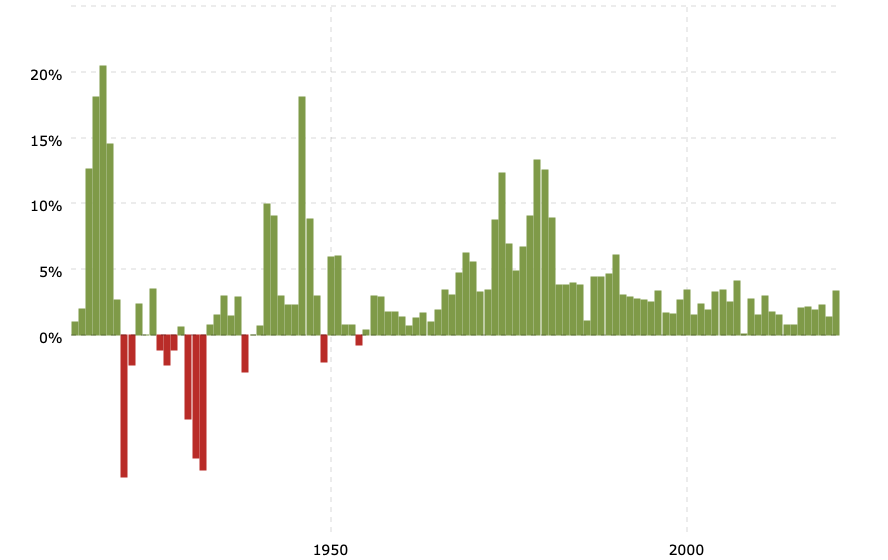Team Fed And CPI
As investors, analysts and commentators warm to the idea that "inflation is likely transitory", much of what we have been hearing from the the Fed and the United States Treasury seems to support that interpretation.
Team Fed member (aka Secretary of Treasury) Janet Yellen, who has used the word 'transitory' on other occasions, followed up her own attempts (here and here) to introduce the word into mainstream financial vocabulary with additional comments in a press conference after the G-7 meeting in London...
“We’re seeing some inflation but I don’t believe it’s permanent. We at least on a year-over-year basis will continue, I believe, through the rest of the year to see higher inflation rates -- maybe around 3%.”
What she really means is that she hopes the effects of inflation won't morph into something a lot worse than what is currently happening.
CURRENT CPI RATES
What is currently happening is that the increases in prices according the the CPI (consumer price index) have risen measurably since last year. As measured by the CPI, consumer prices for May 2021 were up 5% over the past 12 months.
However, when you consider the fact that prices in May 2020 increased by only .01 percent and the rate of increase for the previous twelve months was the lowest in five years, then the latest CPI readings are not that inflammatory.
The current year-to-date annual increase in the CPI for 2021 is 3.35%. There is concern that the increases may continue and that CPI rate for the full year might move above 4%, or higher.
When comparing that to last year's rate of 1.36%, there might be potential cause for alarm. However, 2020 was an unusual year and the CPI rate for 2020 was significantly lower than in previous years.
Also, the last time consumer prices exceeded an annual rate of 4% for a full calendar year (4.08%, 2007), the following year, 2008, brought a drop in the CPI rate all the way down to .09%.
The above facts lend some credence to statements made by Team Fed co-captain Jerome Powell earlier this year...
“An episode of one-time price increases as the economy reopens is not the same thing as and is not likely to lead to persistently higher year over year inflation into the future,”
“...(while)we know that the base effects will disappear in a few months, it's much harder to predict, with confidence, the amount of time it will take to resolve the bottlenecks” or “the temporary effects that they will have on prices.”
I agree.
CONCLUSION
Here is a chart that shows annual CPI rates dating back to 1914...

The CPI rate of increase has not been above 10% since 1980 - forty years ago; and it has not exceeded 5% either, except for one year, 1990.
In addition, except for the year 2007, the CPI has not exceeded 4% for the past thirty years.
The average calendar year CPI rate for the past decade is 1.74%.
Don't look for any lasting changes to the pattern of lower CPI rates over time.
Kelsey Williams is the author of two books: INFLATION, WHAT IT IS, WHAT IT ISN'T, AND WHO'S RESPONSIBLE FOR IT and more




"Transitory" is a carefully chosen word stating the condition of being in transit, meaning "changing, not permanent". So what we have is a newly added weasel word to the vocabulary of obfuscations. And we have no hint that the changing period will be short term, although that is the intended implication. So what is actually being said is that "the inflation will go on for some time, and eventually it might end." I do not find that claim to be very reassuring at all.
I am not sure if it could be called inflation, because it was rather local, but during my early youth in the mid 1950s, I recall my mother complaining that every time the UAW announced winning another wage increase, prices in the grocery store would increase the next day. So it was a zero-sum victory for the auto workers and an incremental loss for the non-auto workers.